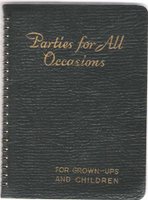On reading:
In the sort of screen dappled with different states of mind which my consciousness would simultaneously unfold while I read, and which ranged from the aspirations hidden deepest within me to the completely exterior view of the horizon which I had, at the bottom of the garden, before my eyes, what was first in me, innermost, the constantly moving handle that controlled the rest, was my belief in the philosophical richness and the beauty of the book I was reading, and my desire to appropriate them for myself, whatever that book might be. For, even if I had bought it in Combray, having seen it in front of Borange's grocery, which was too far away from the house for Françoise to be able to do her shopping there as she did at Camus's, but which was better stocked as stationer and bookshop, held in place by some strings in the mosaic of pamphlets and monthly serials that covered the two panels of its door, which was itself more mysterious, more sown with ideas than the door of a cathedral, the fact was that I had recognized it as having been mentioned to me as a remarkable work by the teacher or friend who appeared to me at that period to hold the secret of the truth and beauty half sensed, half incomprehensible, the knowledge of which was the goal, vague but permanent, of my thoughts.From Swann's Way, translated by Lydia Davis (New York: Viking, 2002), 85-86
All Proust posts (via Pinboard)


